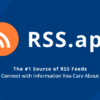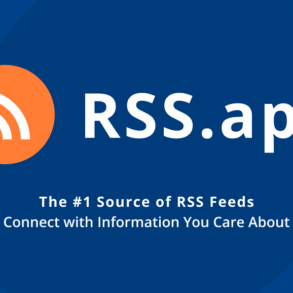Common method bias and correlation analysis between main variables
Before Harman’s single-factor test, the sample data were tested for normal distribution (the results of the normality test showed that the Kolmogorov-Smirnov test did not reject the original hypothesis at the significance level of α = 0.05 and concluded that the sample data obey a normal distribution). Harman’s single-factor test is a method for detecting the presence of common method variance in collected survey data. Following the method of Podsakoff et al. [50], a common method variance assessment was conducted using SPSS 26. The results of the test showed that the first largest single-factor principal component accounted for 28.386% of all variances, which fell short of the 50% warning boundary, indicating that there was no common method variance. Additionally, a Pearson correlation analysis was conducted on the key variables using SPSS 26 (Table 2), with the means and standard deviations summarized in Table 1.
The results revealed significant positive correlations among all five variables: insomnia, information overload, communication overload, information strain, and depressive symptoms, all reaching statistical significance at the 1% level. Particularly, significant positive correlations were observed between information overload and insomnia (r = 0.350, p < 0.01), and also between communication overload and insomnia (r = 0.327, p < 0.01). These findings indicate that during the Omicron lockdown, higher levels of social media overload (both CO and IO) were linked to increased insomnia severity among college students.
Significant positive correlations were identified between depressive symptoms and each of the following variables: information overload (r = 0.337, p < 0.01) and communication overload (r = 0.219, p < 0.01). This result indicates that during the Omicron lockdown, elevated levels of information and communication overload were associated with a greater likelihood of experiencing depressive symptoms among college students. Moreover, there was a significant positive correlation between information strain and two distinct forms of overload: information overload (r = 0.532, p < 0.01) and communication overload (r = 0.364, p < 0.01). These results indicate that as respondents encountered greater information and communication overload, they reported feeling more strain from the excessive influx of information. Overall, these findings provide preliminary support for the hypotheses put forth in this study.
The relationship between information overload, information strain, depressive symptoms, and insomnia
The chain-mediating effect of information overload on insomnia was evaluated after incorporating control variables. This study utilized Model 6 from SPSS 26 in conjunction with the PROCESS 4.0 macro to examine the research hypotheses and the resulting analytical outcomes are presented in Fig. 1; Table 3. The “Total Effect” section of Table 3 demonstrates a notable positive correlation between information overload and insomnia (b = 0.385, CI = 0.302 to 0.468), thereby substantiating hypothesis H1a.
Figure 1 illustrates the processes and outcomes of the chain-mediated effects analysis, reporting the unstandardized path coefficients for the relationships among information overload, information strain, depressive symptoms, and insomnia. The data demonstrate that an overload of information has a markedly positive correlation with information strain, as indicated by a beta coefficient of 0.563 with a p-value less than 0.01(b = 0.563, p < 0.01). Additionally, the results reveal a notable positive association between information strain and the occurrence of insomnia, as evidenced by a beta coefficient of 0.174 with a p-value less than 0.01(b = 0.174, p < 0.01). This lends support to the notion that information strain serves as a mediator between information overload and insomnia, thereby substantiating hypothesis H2a. Furthermore, the presence of information overload was found to exert a significant influence on depressive symptoms (b = 0.201, p < 0.01), which in turn had a significant effect on insomnia (b = 0.515, p < 0.01). The present findings indicate that depressive symptoms also function as a mediator in the association between information overload and insomnia, thereby supporting the tenet of Hypothesis H3a.
Additionally, the analysis revealed a statistically significant association between information strain and depressive symptoms (b = 0.156, p < 0.01). The results demonstrate that both information strain and depressive symptoms mediate the relationship between information overload and insomnia. This supports hypothesis H4a and illustrates a chain-mediated mechanism.
Total, direct, and indirect effects of the chain mediating effect between information overload and insomnia
As illustrated in Fig. 1, and summarized in Table 3, the direct effect as well as the three indirect effects in the mediation pathway is: information overload → information strain → depressive symptoms → insomnia.
The findings indicate that the total indirect effect of 0.246 constitutes 63.92% of the total effect (0.385), underscoring the significance of the indirect pathways. The direct effect was measured at 0.274, accounting for 177.18% of the total effect, further emphasizing the importance of the indirect effect. Specifically, when information overload positively influences insomnia, 63.92% of this effect is channeled through the three mediating pathways:
-
(a)
Mediating effect of information strain: This pathway accounts for 25.40% of the total effects and 70.41% of the direct effects.
-
(b)
Mediating effect of depressive symptoms: This pathway is the most substantial, comprising 26.78% of the total effects and 74.23% of the direct effects.
-
(c)
Chain-mediated effect of information strain and depressive symptoms: This pathway represents 11.71% of the total effects observed and 32.47% of the direct effects attributable to the pathway.
The findings indicate a more considerable mediating effect of depressive symptoms compared to information strain and the combined chain mediation. Moreover, the assessment of the overall, immediate, and indirect impacts, in addition to the mediating effects (a), (b), and (c), yielded statistically significant results. The 95% confidence intervals did not encompass a value of zero. This serves to reinforce the robustness of the findings.
The relationship between communication overload, information strain, depressive symptoms, and insomnia
Based on the same premise of hypothesis testing, the research hypotheses were further analyzed using Model 6 in PROCESS 4.0 macro by SPSS 26, with the results presented in Fig. 2; Table 4. As indicated by the “Total Effect” section of Table 4, there is a positive association between communication overload and insomnia (b = 0.356, CI = 0.273 to 0.438), thereby providing empirical support for hypothesis H1b.
Figure 2 illustrates the process and outcomes of the chain-mediated effects analysis, reporting the unstandardized path coefficients for the relationships among communication overload, information strain, depressive symptoms, and insomnia. The analysis demonstrates that communication overload has a significant impact on information strain (b = 0.376, p < 0.01), while information strain exerts a positive effect on insomnia (b = 0.174, p < 0.01). This finding provides empirical support for the hypothesis that communication overload leads to insomnia through the mechanism of information strain, as proposed in hypothesis H2b. Additionally, it was determined that communication overload had a notable effect on depressive symptoms (b = 0.097, p < 0.01), which also demonstrated a positive correlation with insomnia (b = 0.519, p < 0.01). These findings suggest that there is a mediation effect of depressive symptoms between communication overload and insomnia, thereby hypothesis H3b has been supported.
Ultimately, the findings indicated that information strain had a positive influence on depressive symptoms (b = 0.221, p < 0.01). Consequently, both information strain and depressive symptoms collectively mediated the relationship between communication overload and insomnia. This highlights the presence of a chain-mediated mechanism, reinforcing the support for hypothesis H4b.
Total, direct, and indirect effects of the chain mediating effect between communication overload and insomnia
As shown in Table 4, the direct effect and three indirect effects of communication overload on insomnia are structured as follows: communication overload → information strain → depressive symptoms → insomnia. The total indirect effect (0.197) constituted 44.57% of the total effect (0.356), with an additional 80.46% attributed to the direct effect (0.197).
When communication overload contributes to insomnia, 44.57% of this influence occurs via three mediating pathways: (a) the mediating role of information strain, (b) the mediating role of depressive symptoms, and (c) the chain mediation involving both information strain and depressive symptoms. The contributions of these mediating effects are as follows: (a) information strain accounts for 18.39% of the total effects, (b) depressive symptoms contribute 14.09%, and (c) the chain mediation effect represents 12.09%. In terms of direct effects, they correspond to 33.20%, 25.43%, and 21.83%, respectively. These findings imply that information strain plays a more pronounced role as a mediator than depressive symptoms in explaining the relationship between communication overload and insomnia. Additionally, information strain exerts a stronger mediating effect than depressive symptoms on the relationship between communication overload and insomnia.
Additionally, the evaluations of the total, direct, and indirect effects, and each of the mediating effects (a), (b), and (c) demonstrated statistical significance. Notably, none of the 95% confidence intervals encompassed zero, reinforcing the robustness of these findings.
This post was originally published on this site be sure to check out more of their content









